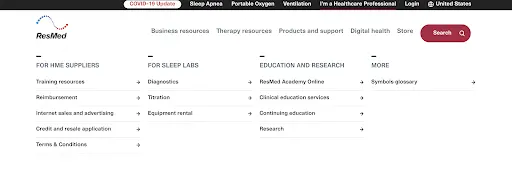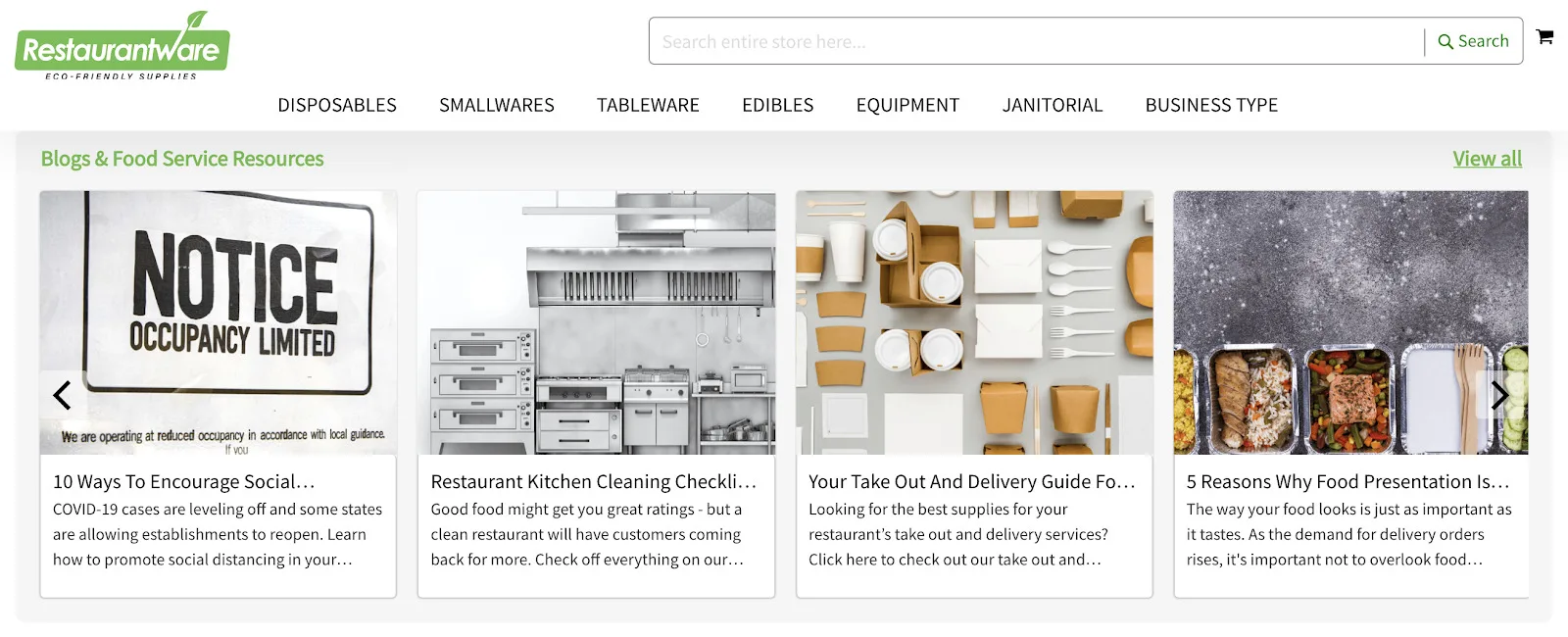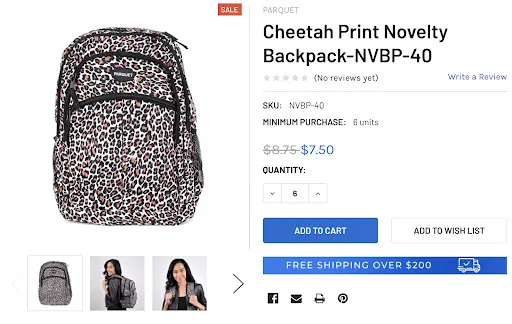Why You Can’t Ignore Marketing for Manufacturers

Let’s be honest. Some manufacturers have been marketing to downline businesses in the supply chain and the general public for decades.
Fashion and lifestyle brands — the companies that design and make your favorite clothing, cars, and leisure enjoyments — have incorporated marketing strategy into business practices for years to develop cultural brands that drive sales.
But outside of certain niches, manufacturer marketing historically didn’t step into the public space. Lead generation was mostly the task of the sales department.
Manufacturers created goods and services, trained inside and outside sales staff, and sent those professionals out to connect directly with potential customers at trade shows, in offices, and via tightly controlled advertising campaigns in industry publications.
Even a decade ago, this type of sales-only relationship with business partners worked. But in today’s competitive landscape, manufacturers are no longer off the hook for marketing.
From content marketing to paid online advertising, manufacturers of all types and sizes are learning to connect with consumers and business customers in meaningful new ways.
Precision Marketing Group notes, “Manufacturers, both buying and selling, tend to stay within small circles of existing relationships.”
Historically, it was about who you knew and who would refer you to someone else. To some extent, this can still be true today. But content marketing, social media, SEO, and a variety of other inbound marketing efforts change that story, making it possible to rise above the referral and grow your business in new ways.
Let’s look at what manufacturer marketing strategies and how to create your own.
Differences in Consumer and Manufacturer Marketing
Before you start creating a marketing plan, you need to understand the client. Are you marketing to businesses or consumers?
Or, like MyWit, are you marketing to both? If so, you need a plan that covers both channels. MyWit makes it pretty clear in its menu where consumers should start (Buy) and where business partners should click (Resellers & Business).

If you’re selling both B2B and B2C, make sure to consider the differences between your audiences as you’re crafting your overall marketing strategy.
1. Manufacturing marketing.
Manufacturing marketing is B2B marketing. It can be more complex, and the sales cycle is longer than with B2C.
Target audience: Other businesses, including downline supply chain manufacturers, wholesalers, retailers, or business end-users, like restaurants or construction firms. You should know which industry you’re targeting, the size and type of companies that need or want your products, and who within those organizations can make purchasing decisions.
Customer needs: Business customers need quality products that fit within their processes and budgets. They need to be able to supply and serve their clients with peace of mind while also making a profit.
Drivers: Whether or not a business chooses your products depends on factors that include price, credit, and terms; what consumers think of your brand; how much support you provide via technical, marketing, and other resources; and whether you can get buy-in from all the right decision-makers.
Purchase process: Business procurement can be complicated. The process includes discovery and pricing comparisons, quotes, demos, and final purchase decisions. You may have to prove your worth to more than one level of decision-makers; typically, the bigger the purchase is, the more levels you have to impress.
People involved with the purchase: Managers, purchasing agents, executive decision-makers, accounting or finance teams, and other subject matter experts.
2. Consumer marketing.
B2C marketing is when you market directly to the consumer or end-user.
Target audience: The demographics of your target audience depend on the product in question. You should know factors like age range, interests, geolocation, income bracket, career, and family status of your target consumers, to appropriately target marketing efforts.
Customer needs: The consumer wants to buy something that can help them solve a problem or make their life easier or more enjoyable. In some cases, they want a product for the message it sends or status it communicates, like with certain brands or luxury items.
Drivers: Factors that drive consumer purchasing decisions include price, quality, brand reputation, how likely they can see themselves using the item, customer experience, and referrals or reviews of others.
Purchase process: All consumer purchases follow a basic process that involves awareness, consideration, and decision making. The speed at which a consumer moves through the purchasing process depends in part on the complexity. The buying journey for buying a taco takes seconds or minutes. When shopping for a television or sofa, consumers could take days or weeks.
People involved with the purchase: In most cases, it’s just the consumer and a significant other or close family member. In larger purchases, lenders may also be involved.
Challenges in B2B Manufacturer Marketing
B2B marketers can face unique challenges that most B2C marketers don’t. The relationships within your organization — with sales, for instance — and outside of the manufacturing firm, like with vendors, supply chains, and clients, is complex.
For example, according to data sourced by Hubspot, only around half of B2B marketers feel like they’re able to collaborate effectively with sales teams.
Check out some of these other challenges manufacturers might face in marketing.
1. Very specific needs.
Manufacturing marketers have particular needs, especially when compared with general consumer marketers.
For example, one of the biggest KPIs for consumer marketing is website traffic. If you can drive enough of the right people to a consumer ecommerce site, the thought is that you’ll make your sales numbers.
But manufacturers can’t just drive vast amounts of traffic to a well-built site and cross their fingers.
You might not have huge amounts of traffic to leverage, depending on your business’ niche or vertical.
You also have to balance how much information you want to share on your public-facing website with how you want to manage relationships with your clients. In some cases, you might need to limit access to information about your goods to best support your business partners.
2. Long sales cycles.
Manufacturing often involves long sales cycles. A PPC ad campaign isn’t going to drive the same results in B2B marketing as it does in B2C marketing, where many people see almost immediate conversion results.
Instead, your marketing tactics might be more about brand awareness and lead generation. The leads are then handed over to the sales department for nurturing over weeks, months, or even years before deals close.
3. Complex products.
Manufacturing businesses that sell complex products aren’t likely to see great success in marketing direct online sales to B2B buyers. If your product costs $5,000 and has a variety of features to customize, someone’s unlikely to click on a “buy now” button and enter business credit card data, for example.
Determine how buyers interact with your products and what they need from you in the early stages of the buying journey. Spectrum Audio meets this need by using a customized quoting tool supported by B2B Ninja, allowing potential clients to request a custom quote based on their unique needs.
4. More people to convince.
B2C marketing can rely on some tried-and-true tactics, like leveraging micro-moments, to connect with consumers at just the right time to promote a purchase. Creating a sense of urgency to spark an impulse buy or sending cart abandonment emails are proven B2C marketing methods that can fall short in manufacturer marketing.
The reason many of these tactics don’t work as well — or at all — when you’re marketing to other businesses is that there are so many more stakeholders to convince. Business buying decisions in medium and large companies might include:
Someone in middle management becoming aware of the need.
That person then has to convince others that there is a need.
The original person may do some preliminary investigation to demonstrate that there are products to meet the need.
Executive decision-makers may appoint someone (or a committee of people) to continue with research.
The field is narrowed down and options are presented to leadership.
Leadership asks questions to dig into more details, and the field is further narrowed down via demos, quotes, and discussions.
Finally, a decision is made.
The challenge is that your marketing efforts have to continue to support your chance at making the sale throughout that entire process. ResMed proactively supports businesses throughout the buying journey with plenty of business and educational resources that can help convince and convert stakeholders.

Advantages to Using Marketing with Manufacturers
According to data shared by Chief Marketer, B2B marketers often have trouble getting prospects to engage or finding high-quality leads. That’s where a strong marketing strategy comes in.
1. More lead conversions.
According to Content Marketing Institute’s 2020 B2B Content Marketing Benchmark report, close to 70% of the most successful B2B marketers have a documented content marketing strategy. Only 16% of the least successful firms can say the same, and the lack of commitment to marketing clearly shows.
Other traits of successful B2B companies — they use KPIs to measure marketing success, nurture prospects, and prioritize educating the target audience over selling to them.
2. Brand awareness.
Online marketing is a proven approach to building brand awareness, which improves customer loyalty and helps you convince multiple stakeholders that you’re the right company to work with. And B2B marketers know how important this is — they consistently list it as a top priority in surveys.
When you invest in social media marketing, great website content, PPC advertising, and SEO efforts, you invest in building your brand. Here are just a few returns you might get on that investment:
When someone realizes their company has a need, you’re the first manufacturer who comes to mind. Brand awareness puts you ahead of the competition right out of the gate.
As the need and relevant purchasing decisions are being discussed, business stakeholders throughout the organization recognize your company name. Again, this puts you ahead of competitors, because buyers (even business ones) are more likely to purchase from the brand they know.
Your client’s consumers might be aware of your brand and ask for your products. Or, your client can use your name in their marketing message because you have a good brand reputation, and that adds value to working with you.
3. Position your business as a thought leader.
Thought leadership positions you as a resource of whom the client can turn to for expert advice, helpful information, or training and education. It’s a requirement if you’re selling high-end or sophisticated goods, but content marketing that includes thought leadership is a good idea for any manufacturing company.
Case studies and white papers are two common digital marketing formats that lend well to thought leadership, especially since you can use them to create leads. Require someone to make an account and enter their email address to get a valuable white paper. You suddenly have leads interested enough in what you have to offer that they traded their contact information just to find out more.
But not all thought leadership needs to be behind a paywall. Blogs and social media are a great place to demonstrate your position in the industry by sharing your content or sharing someone else’s content and adding value with your own comments.
Restaurantware, a restaurant supplies manufacturer and distributor, does a great job creating authority on its blog. That lets potential buyers see that Restaurantware, and its products, really is the expert in the eco-friendly catering space that it claims to be.

4. Enhance customer loyalty.
The right type of marketing can enhance customer loyalty. First, all of the above benefits work toward creating a culture of trust with your brand. If consumers trust your name, so can businesses. If middle management can trust your company, executives are more likely too. Brand awareness helps drive that trust.
Once you capture and even convert a lead, though, the marketing job isn’t done. Engaging with the consumers on social media, sending well-planned and timed email newsletters, and offering promotions via online marketing are all ways you can increase the chances that clients will return for a future purchase.
7 Manufacturing Marketing Strategies
Now that you know why manufacturing marketing is important, how do you go about it? Start with these seven marketing strategies for manufacturing companies.
1. Publish written content.
You might have heard that content is king. It’s a saying that’s been around for years, and it still rings true for online marketers today. Your content — the information you publish on your site — is the main contributor to all of the following efforts:
Search engine optimization, which ensures you show up when potential clients search online.
Positions you as a manufacturer that can be trusted. Close to 50% of people read three to five pieces of content from a business before reaching out for more information or a quote.
It helps push people further down the funnel. A business contact in the awareness state may find something in your content to help convert them to the consideration state, for example.
Sites that use multiple forms of content can better increase sales. That’s because people engage with different types of content to varying degrees, and one person might want to read about your product while another wishes to view a video.
Sometimes, you need to supply both to help educate the potential client, especially in the case of complex manufacturing products.
Consider including video content, whitepapers, case studies, blogs, infographics, and slide presentations on your site. Remember that you’re not the only one trying to convince someone to make a purchase; your contact at a business might be trying to convince stakeholders, and your content can be leveraged to create presentations that do the trick.
2. Email marketing.
As noted above, manufacturing marketing is often a long game. It’s easy for your message to get lost in the shuffle that occurs when potential clients review options, reevaluate priorities, and get caught up in managing daily operations.
Email marketing newsletters let you capture interested leads so you can show up in their email inboxes periodically. It keeps you fresh in their minds.
Email is also a great tool for marketing automation. You can create drip campaigns to send a series of messages to prospective clients whenever they take a specific action. For example:
Someone downloads a whitepaper on a piece of restaurant equipment. They enter their email to do so.
You send them emails over a few weeks or months. Those emails might cover information, like how much the product can save them over time, how the equipment improves quality, and the potential for scaling kitchen operations.
Every email offers another touchpoint and another CTA letting the potential client know you’re available to provide a quote or additional information.
3. Employ SEO.
Even Google admits that the path to purchase can be long and varied. But a common factor is that many people start with an online search. Close to 90% of purchases start online, and most marketers believe SEO is one of the top five traffic drivers.
In short: If you’re not showing up in the search engines, you’re missing out on many potential leads.
4. Effective Google ads and PPC.
But SEO isn’t guaranteed. You can’t buy your way into the top organic page results in Google, and getting there takes a commitment to content, patience, and a little bit of luck. This is why many organizations also invest in Google and PPC ads.
Marketing campaigns that include paid efforts can get your manufacturing company on search results pages in minutes, but your ads have to be effective. That means doing the research to understand which keywords to target and understand how your buyer personas might search online.
5. Test your website.
Once you do have content and other functional elements on your site, test it. It doesn’t matter how awesome your content is if the site provides a poor user experience. If you can’t offer a seamless, easy-to-use site experience, people may doubt your ability to provide quality products and customer experience.
Make sure:
All links, buttons, and other functionality on your site work as planned. Check them on multiple devices and in different browsers.
The pages load quickly. If your pages take just one second more to load than they have to, you could lose 7% of conversions. And 40% of people will simply leave a site if it takes more than three seconds to load.
Ensure your site is mobile-friendly first because Google cares. Sites that don’t function on mobile might be buried or even delisted from SERPs. Second, because your potential clients might start their engagement on mobile. Whether someone is browsing from their own phone or doing research while traveling with a company mobile device, if your site isn’t ready, you’re not ready to make the sale.
6. Trade shows.
Note every B2B marketing effort should be online. Manufacturers may want to be present at trade shows and other industry events. Doing so increases brand awareness and demonstrates that you care about others in the industry.
Meeting prospects at a trade show is also good for the bottom line. Because you’re meeting a number of potential clients while also engaging in networking and education events, the cost per meeting can be as much as $100 less than when meeting prospects individually in their offices.
7. Integrate social media.
Social media is another place where you can increase brand awareness and customer loyalty. It also lets you connect with potential clients in an organic way — often where the prospect is already located online. While Facebook, Instagram, and Twitter can be powerful channels for B2B marketing, manufacturers may want to start with LinkedIn and maintain a strong presence there.
Thing to Consider: Manufacturer Marketing
Not every tip and strategy above is going to work for your business. Ask yourself the following questions to understand what options might be right for you.
1. Are you offering a commodity product, or a customized product or service?
Simpler commodity products can be sold online via ecommerce platforms. You can market them with efforts such as product descriptions, PPC ads, and blog posts to support SEO.
Customized products and services may require more hands-on efforts. Consider creating lead generation tools such as white papers, videos, and ebooks. Once prospects share their contact information, sales can reach out to ask how they can help.
2. Is your buyer an individual person or a committee of buying process influencers?
PPC ads, strong CTAs, well-written product pages, and engaging social media marketing are all good ways to connect with a single person. To sell to a committee, you’ll need in-depth marketing collateral and a way to manage the lead nurturing process.
3. How heavy is competition in your industrial sector niche?
How hard you have to work on SEO and other brand awareness efforts depends on how much noise there is in the industry. If only a few manufacturers make this type of equipment, you have a better chance at dominating search with great online content. If hundreds of businesses are competing with you, paid ad efforts might be required to show up on top of the competition when someone searches online.
Steps for Adopting Manufacturing Marketing Strategies
Marketing is sophisticated, and the more complex your business or products are, the harder it can be to know where to get started. Start with the following series of steps to adopt strong marketing practices in the manufacturing industry.
1. Set your goals.
Know what you’re trying to achieve. Marketing is full of metrics, including page traffic, click-throughs, and time spent on the page. If you haven’t decided on specific business goals, it can be easy to get caught up in working toward these marketing goals. And while click-through rates are important, they’re only necessary because they support your conversions and sales.
2. Build out your marketing team.
You need someone to keep track of all these efforts. You can pay an agency experienced in manufacturing marketing, but it’s still a good idea to have someone in-house who concentrates on digital marketing and holds freelancers or agencies accountable to your business goals.
3. Define your buyer persona.
Take time to define your target audience. Who is most likely to be interested in your products? What are their needs? Can they make decisions, or do they have to get decision-making approval from others? The more you know about the buyer persona, the better you can target your marketing efforts, which saves you time and money.
4. Select strategies that support the audience.
From social media to website content to shopping cart options, make sure all your marketing and customer service strategies support the audience you’ve defined. For example, Selininy uses bulk pricing to assist commercial buyers. Since the products are relatively simple, buyers can shop and buy directly online without other touchpoints, but they can also take advantage of discounts by buying more at one time.

5. Launch and test.
Never assume that your content marketing strategy or other efforts are all you can do. Marketing is about continuous improvement. Engage in A/B testing to check various elements in your marketing.
For example, do you get more responses on emails you send Tuesday mornings or Wednesday afternoons? If the answer is Wednesday, then run another test. Do you get more traction from a subject line that’s long or one that’s less than 30 characters?
By constantly testing, you can improve the ROI generated by your marketing.
Wrapping Up
In 1977, Harvard Business Review asked, “Can Manufacturing and Marketing Coexist?” More than 40 years later, the answer is clear. Not only can these two exist, but they must. If you’re not engaging in manufacturer marketing, you’re putting your business on the slow conveyer belt to irrelevance.

Robin Henery is the Affiliate Partnerships Manager at BigCommerce, where she manages the relationships and engagements with valuable affiliate partners who are helping to make ecommerce more learnable and accessible for merchants. Robin received a B.S. in Advertising from The University of Texas at Austin, and has specialized in digital marketing for the last 4 years. Outside of work, Robin enjoys creating art, listening to audiobooks, and being outdoors with her dogs and loved ones.


